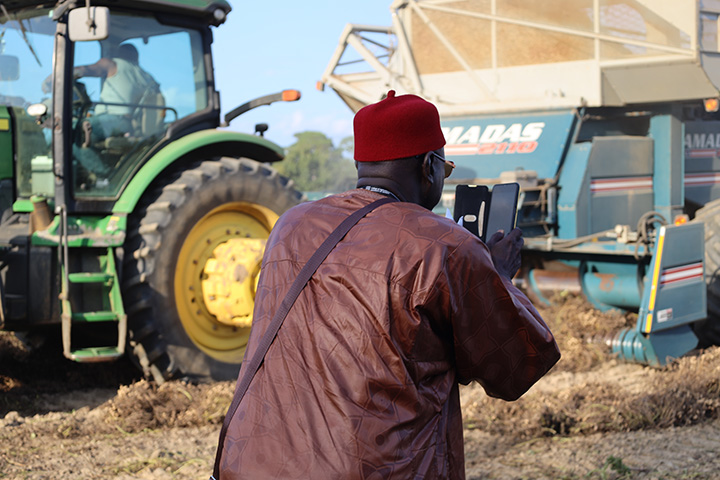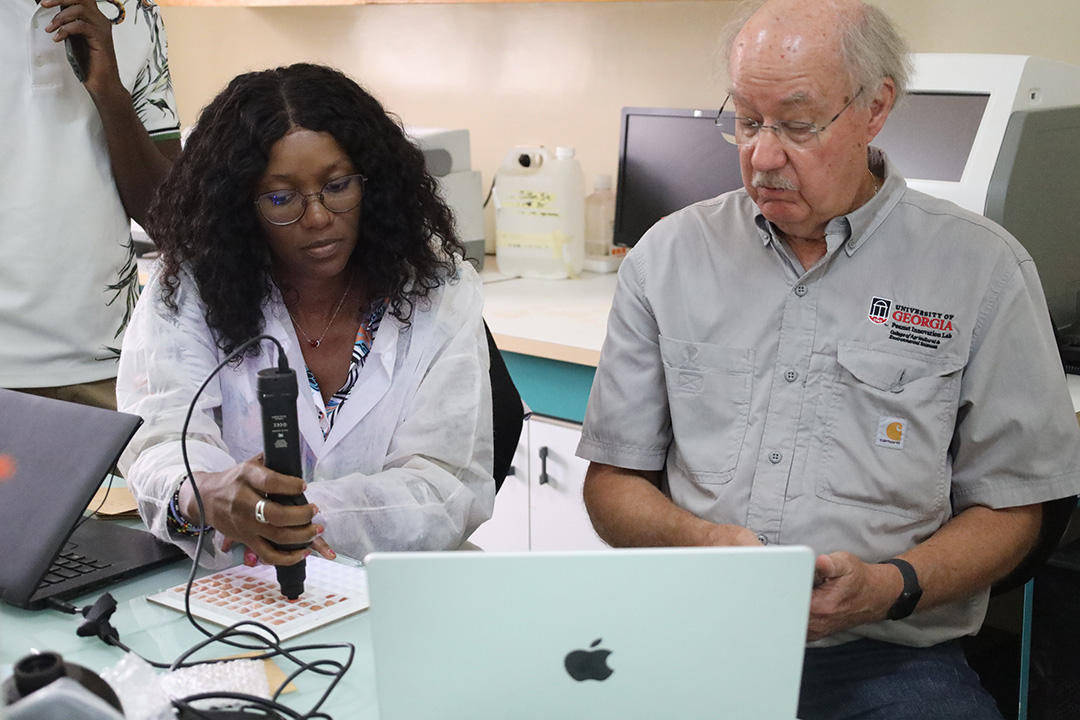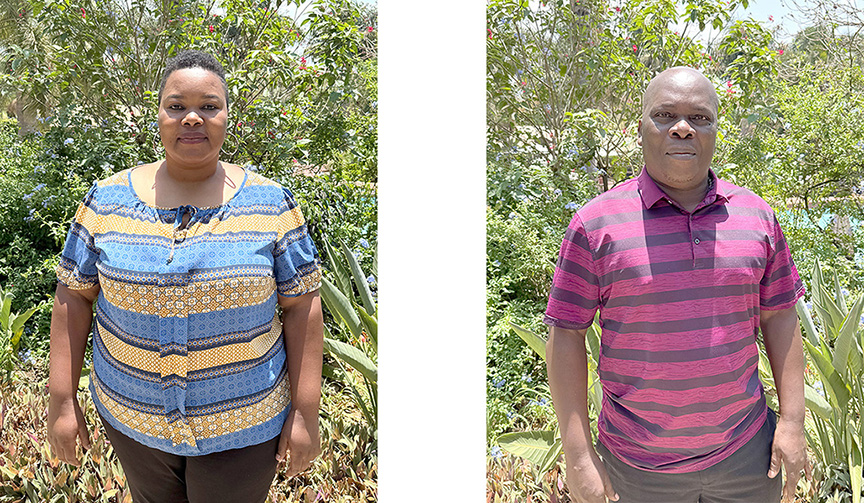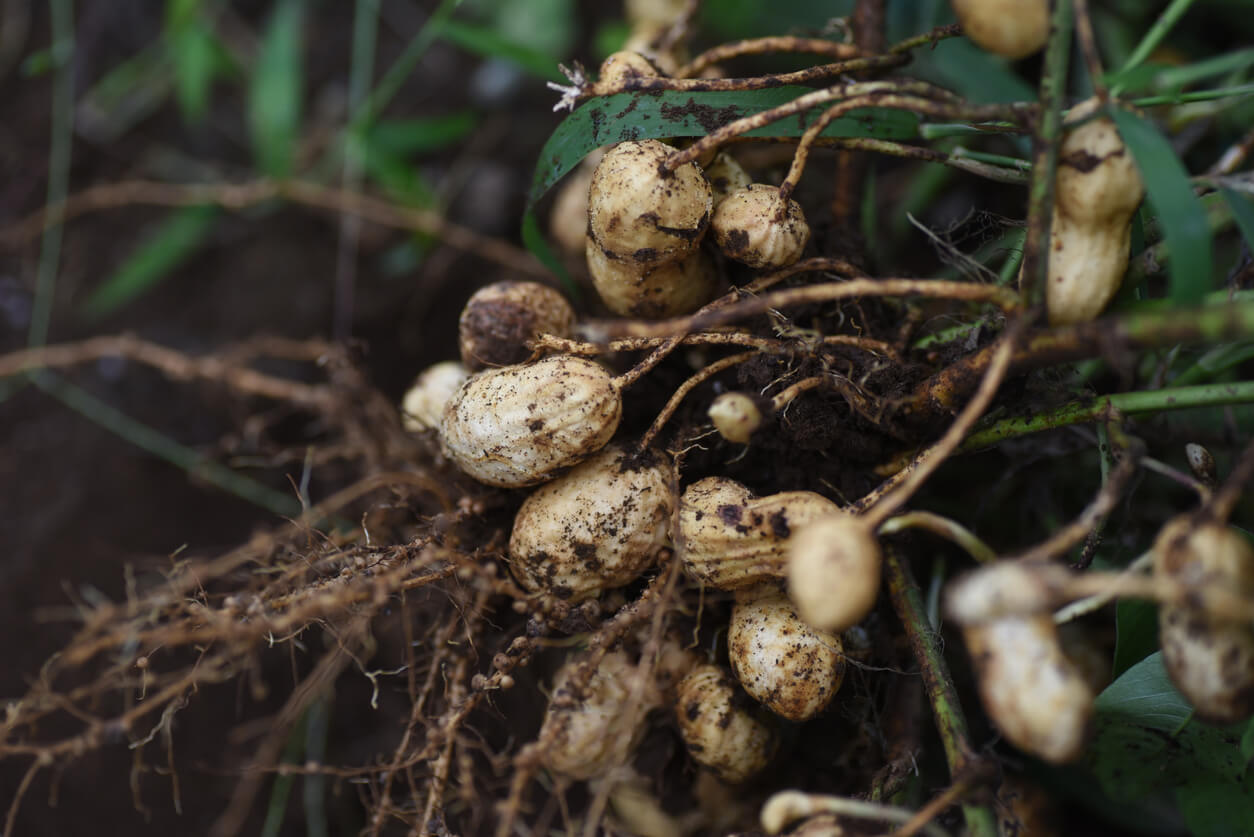Seeing for yourself makes a big difference at the Georgia Peanut Tour which was held this September in the southwest corner of the state.
Each year, the Feed the Future Innovation Lab for Peanut brings partners from other countries to share in the three-day bus tour throughout the southern half of Georgia. This year, the lab hosted three dozen guests from Ghana, Senegal, The Gambia, Malawi, Uganda, Madagascar and Zambia for the three-day tour, as well as two additional days of visits to research sites, a food product innovation center, the U.S. peanut germplasm collection and a factory that makes Ready-to-Use Therapeutic Food (RUTF).
The 36th annual tour included popular stops offered every year such as:
Peanut digging or lifting – At harvest, a tractor pulls a two-ton attachment across the field that delicately lifts the peanut plants out of the ground and flips them over to dry in the field.
Peanut combining – Two or three days after harvest, when the peanut plants and pods have partially dried in the field, the farmer returns with a combine that picks up the plants, threshes to separate the nuts and vines, and pours the nuts into a trailer that will be driven to the buying point.
Buying point – Tractor trailers fitted with special dryers come directly from the field to the plant, where workers take samples, grade the peanuts according to quality and size, and test for aflatoxin. In a matter of weeks, 1.5 million tons of peanut will arrive this way from Georgia fields.
“Georgia is the largest peanut producer in the U.S. and, while the innovations that make that system work aren’t always directly translatable to our colleagues in Africa, the concepts and linkages within Georgia’s integrated value chain always get people talking,” said Dave Hoisington, director of the Peanut Innovation Lab. “Often they go home with new ideas and connections to make improvements that work in their own systems.”
The value of the tour was on display earlier this year in Malawi, where the peanut industry is growing and commercializing as farmers diversify from tobacco. Stakeholders held a similar Groundnut Tour in Malawi in April, drawing hundreds of people from Malawi and across southern Africa to highlight the achievements and address challenges ahead for the groundnut sector there.
Abukari Alidu Abdul-Razak traveled from northern Ghana to attend the Georgia tour and made connections with other groundnut growers who face the same challenges on their own farms.
“The networking was invaluable,” he said. “My biggest takeaway is that irrigation not only is possible, but it is also necessary. If we are going to think about increasing our production in Ghana, we have to be serious about making investments.”
Momodou Cham of The Gambia was particularly impressed by the equipment highlighted on the Georgia tour.
“You can see this on the Internet, but it’s a different thing to witness it in person,” he said as he took video of a peanut combine in action.
The visiting delegation included farmers, researchers, buyers/processors, USAID and Irish Aid, as well as NGOs.








